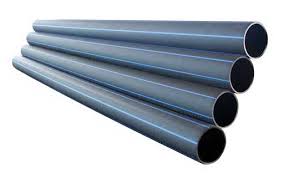Nov . 04, 2024 20:33 Back to list
ppr pipe heating time service
Understanding PPR Pipe Heating Time Service
PPR (Polypropylene Random Copolymer) pipes have gained significant popularity in recent years, particularly in plumbing, heating, and industrial applications. Their durability, chemical resistance, and lightweight nature make them an excellent choice for various installations. However, one critical aspect that often goes overlooked is the heating time required to properly fuse PPR pipes and fittings—a process crucial for ensuring a secure, leak-free installation. This article explores the importance of understanding PPR pipe heating time and the services available to assist with the process.
The Importance of Heating in PPR Pipe Installation
The joining of PPR pipes typically involves a method known as heat fusion, where the ends of the pipes and fittings are heated to a specific temperature before they are pressed together. This process allows the thermoplastic material to melt slightly, creating a strong bond once cooled. However, the effectiveness of this joining method highly depends on adhering to the recommended heating times and temperatures. Incorrect heating can lead to weak joints, which may eventually result in leaks or pipe failure.
The heating time for PPR pipes varies depending on the diameter of the pipes and the specific equipment used. For instance, smaller diameter pipes typically require less heating time compared to larger ones. The manufacturer's guidelines, therefore, provide specific recommendations for heating times and temperatures, which are generally around 260°C (500°F) for PPR materials. Adhering to these recommendations is vital for achieving optimal joint integrity.
Factors Affecting Heating Time
Several factors can influence the heating time required for PPR pipes. These include
1. Pipe Diameter Larger diameter pipes take longer to heat compared to smaller diameters. Each pipe size has a specific heating time that should be followed according to industry standards.
2. Ambient Temperature The surrounding temperature can impact the heating process. Colder environments may require slightly longer heating times to achieve the necessary fusion temperature.
3. Heating Equipment The type of equipment used for heating plays a significant role. Professional-grade welding machines usually result in faster and more consistent heating compared to lower-quality tools.
ppr pipe heating time service

4. Skill Level The expertise of the technician performing the heat fusion can also have an impact on heating time and the overall quality of the joint.
PPR Pipe Heating Time Services
Given the complexities associated with heating PPR pipes and the potential implications of improper fusing, many professionals and contractors offer specialized PPR pipe heating time services. These services typically include
- Consultation and Assessment Experts assess the installation site and recommend the most suitable PPR pipe sizes and heating equipment based on the project requirements.
- Equipment Rentals For DIY projects or smaller contractors, renting professional-grade heating equipment can ensure better results while saving on upfront costs.
- Training Workshops Many service providers offer training sessions for technicians and plumbers to enhance their skills in pipe fusion techniques, ensuring they can confidently execute high-quality installations.
- Hands-On Installation Support Professional plumbers can be contracted to handle the entire installation process, guaranteeing that the heating times and methods are correctly followed, thereby minimizing risks.
Conclusion
Understanding PPR pipe heating time is crucial for anyone involved in plumbing or heating installations. By adhering to best practices and seeking professional guidance when necessary, installers can significantly reduce the risks of joint failure and ensure a safe, long-lasting plumbing system. As PPR pipes continue to be a favored choice in various applications, the importance of proper heating techniques and services will only grow, necessitating a stronger emphasis on education and training within the industry. Ultimately, investing in the right knowledge and services can lead to substantial savings in maintenance and repair costs down the line, creating a win-win scenario for both contractors and clients alike.
-
High-Quality PVC Borehole Pipes Durable & Versatile Pipe Solutions
NewsJul.08,2025
-
High-Quality PVC Perforated Pipes for Efficient Drainage Leading Manufacturers & Factories
NewsJul.08,2025
-
High-Quality PVC Borehole Pipes Durable Pipe Solutions by Leading Manufacturer
NewsJul.08,2025
-
High-Quality PVC Borehole Pipes Reliable PVC Pipe Manufacturer Solutions
NewsJul.07,2025
-
High-Quality UPVC Drain Pipes Durable HDPE & Drain Pipe Solutions
NewsJul.07,2025
-
High-Quality Conduit Pipes & HDPE Conduit Fittings Manufacturer Reliable Factory Supply
NewsJul.06,2025

